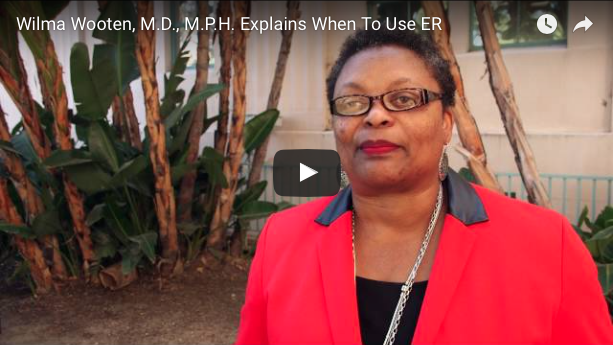In an effort to reduce congestion at local hospital emergency rooms, regional health care leaders urged the public on Friday to use emergency rooms only in actual medical emergencies and provided recommendations for individuals on managing their health care to avoid ER overuse.
“Emergency room overuse is a national problem that is also occurring in San Diego County,” said Dr. Wilma Wooten, County Public Health Officer. “There are a number of factors driving the congestion in emergency rooms, but the results may be longer wait times and overcrowding.”
Officials recommended three important steps individuals can take to help ease the pressure on emergency rooms:
- LEARN about options for non-emergency medical care, including urgent care and community clinics.
- KNOW your “medical home.” That means enrolling in health coverage, getting familiar with the plan and visiting a primary care provider in non-emergency cases.
- PLAN ahead for non-emergency medical situations, so that type of care can be handled outside of the emergency room.
If you do not have health insurance, you can call 2-1-1 to find out information about clinic locations that provide non-emergency care or for assistance in signing up for medical coverage.
In the past decade, the number of emergency room visits has increased by 40 percent, while San Diego County’s population grew by 7 percent. During this same period, 53 percent of ER visits were for non-emergencies.
“The local emergency medical services system has reached a critical tipping point,” said Dimitrios Alexiou, President and CEO of the Hospital Association of San Diego and Imperial Counties. “This is not the result of any single factor, and it did not occur overnight. It has been building for several years, and has increased notably since the start of the Affordable Care Act.”
That perspective was echoed by San Diego County Fire Chiefs’ Association President Don Butz, who is chief of the Viejas Fire Department and represented ambulance providers.
“Emergency room overcrowding has effects outside the hospital,” Butz said. “It can result in ambulances being backed up and unavailable for longer periods before they are able to respond to future calls.”
Officials stressed that if individuals feel they have a medical emergency, then to call 9-1-1 or go to their emergency department.
“Trust your instinct and if you feel a problem is serious, don’t hesitate to go to the nearest emergency room,” said Dr. Nora Faine, Medical Director of Molina Healthcare of California. “On the other hand, if a situation is a non-emergency, then contact your medical provider for assistance.”
For those who do not have medical insurance, 2-1-1 San Diego can connect individuals to resources like local community clinics and health centers, and can assist with Medi-Cal and Covered California applications for health care coverage.
MD Today Urgent Care San Diego walk-in clinics are a perfect alternative to the ER for life threatening emergency.



